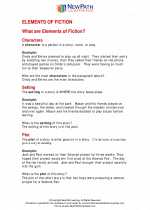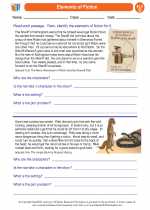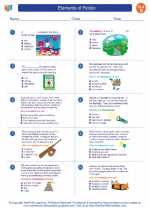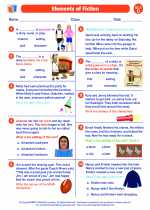Elements of Fiction
Fiction is a form of literature that is not based on real events, people, or places. It is created from the imagination of the author. In fiction, there are several key elements that help to create a compelling story.
Plot
The plot is the sequence of events that make up a story. It includes the exposition, rising action, climax, falling action, and resolution. These elements work together to create the structure of the story and to engage the reader.
Character
Characters are the individuals who participate in the action of the story. They can be protagonists (main characters) or antagonists (opposing characters). Characters are developed through their actions, dialogue, and interactions with others in the story.
Setting
The setting of a story is the time and place in which it occurs. It includes the physical location, time period, and social environment. The setting helps to establish the mood and atmosphere of the story.
Point of View
The point of view is the perspective from which the story is told. It can be first person (narrator is a character in the story), third person limited (narrator knows the thoughts and feelings of one character), or third person omniscient (narrator knows the thoughts and feelings of all characters).
Theme
The theme is the central idea or message of the story. It is the underlying meaning or insight that the author wants to convey to the reader. Themes can be universal and apply to all people, regardless of time or place.
Conflict
Conflict is the struggle between opposing forces in a story. It can be internal (a character's own thoughts and feelings) or external (a character's struggle against an outside force). Conflict is essential for creating tension and driving the plot forward.
Symbolism
Symbolism is the use of objects, characters, or actions to represent abstract ideas or concepts. Symbols can add depth and layers of meaning to a story, allowing readers to interpret the text on a deeper level.
Style and Tone
The style and tone of a story refer to the author's use of language and the overall mood or attitude of the writing. It includes the choice of words, sentence structure, and the emotional quality of the narrative.
Study Guide Questions
- What is the role of plot in a work of fiction?
- How do authors develop their characters in a story?
- Why is setting an important element of fiction?
- What are the different points of view that a story can be told from?
- How does conflict drive the action of a story?
- What is the significance of symbolism in a work of fiction?
- How does an author's style and tone impact the reader's experience?
By understanding and analyzing these elements of fiction, readers can gain a deeper appreciation for the art of storytelling and the complexities of the human experience.
[Elements Of Fiction] Related Worksheets and Study Guides:
.◂English Language Arts Worksheets and Study Guides Fourth Grade. Elements of Fiction

 Activity Lesson
Activity Lesson
 Worksheet/Answer key
Worksheet/Answer key
 Worksheet/Answer key
Worksheet/Answer key
 Worksheet/Answer key
Worksheet/Answer key
 Worksheet/Answer key
Worksheet/Answer key
 Worksheet/Answer key
Worksheet/Answer key
